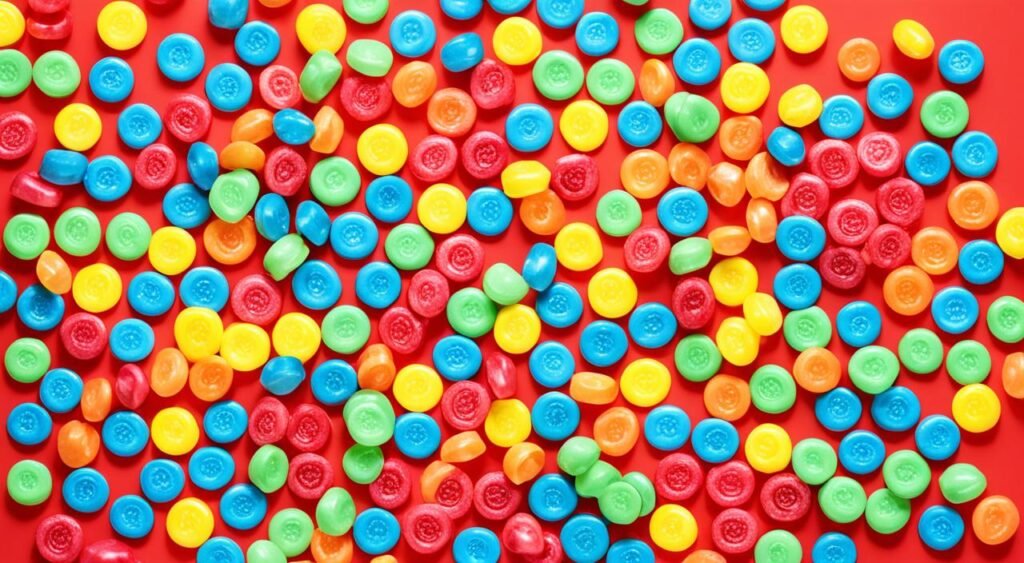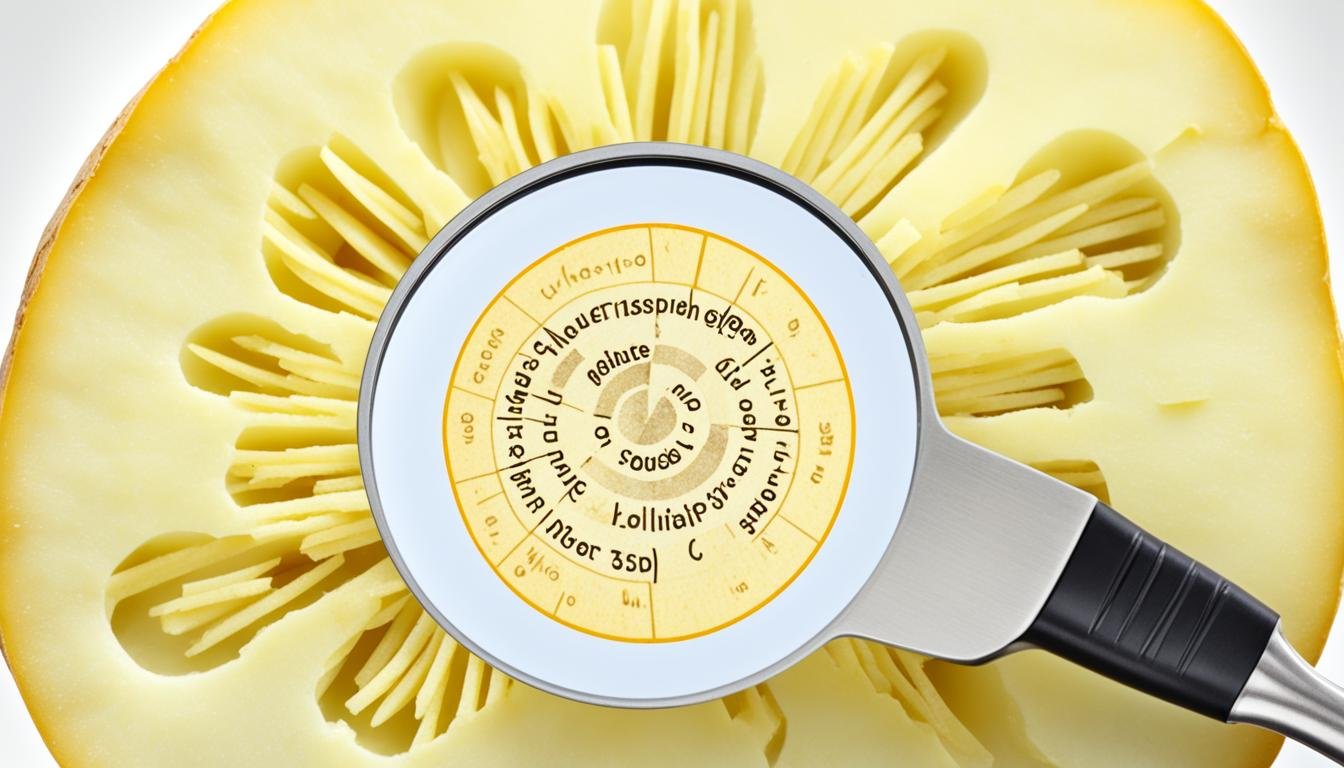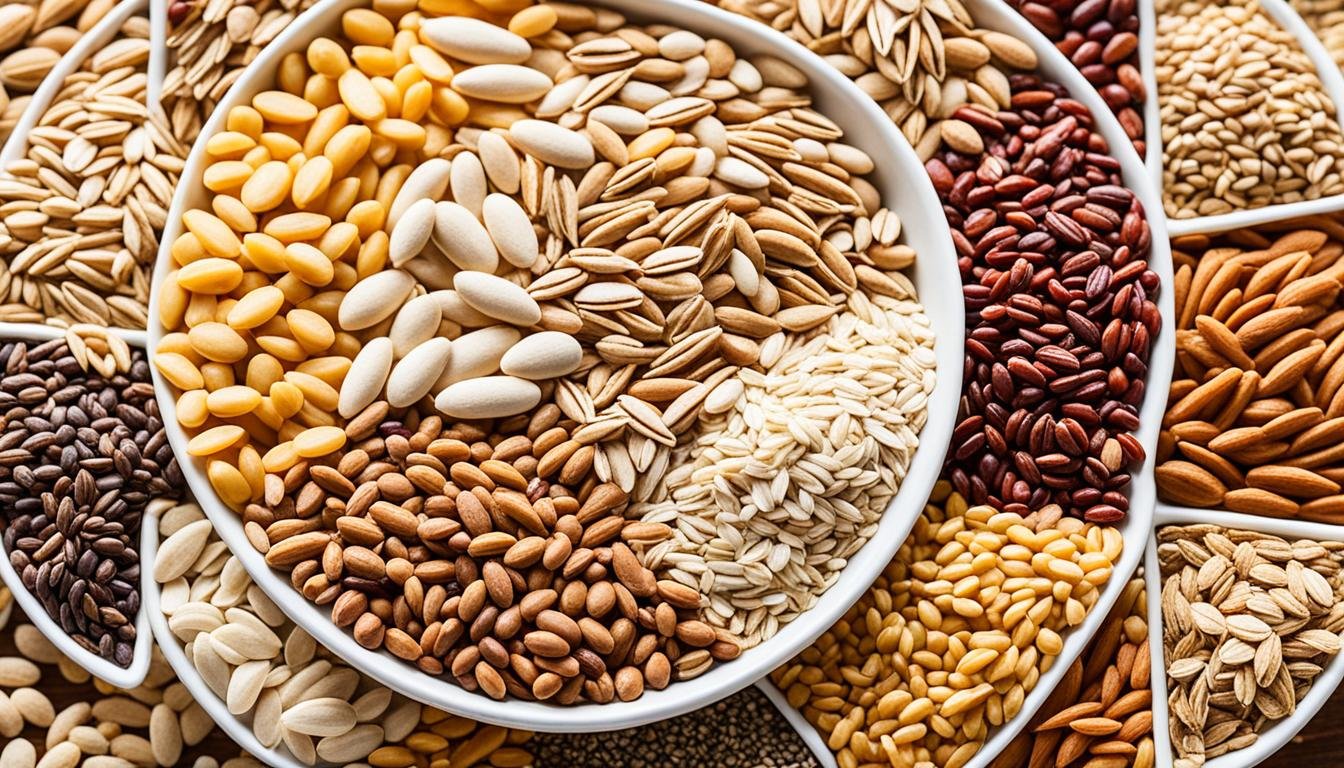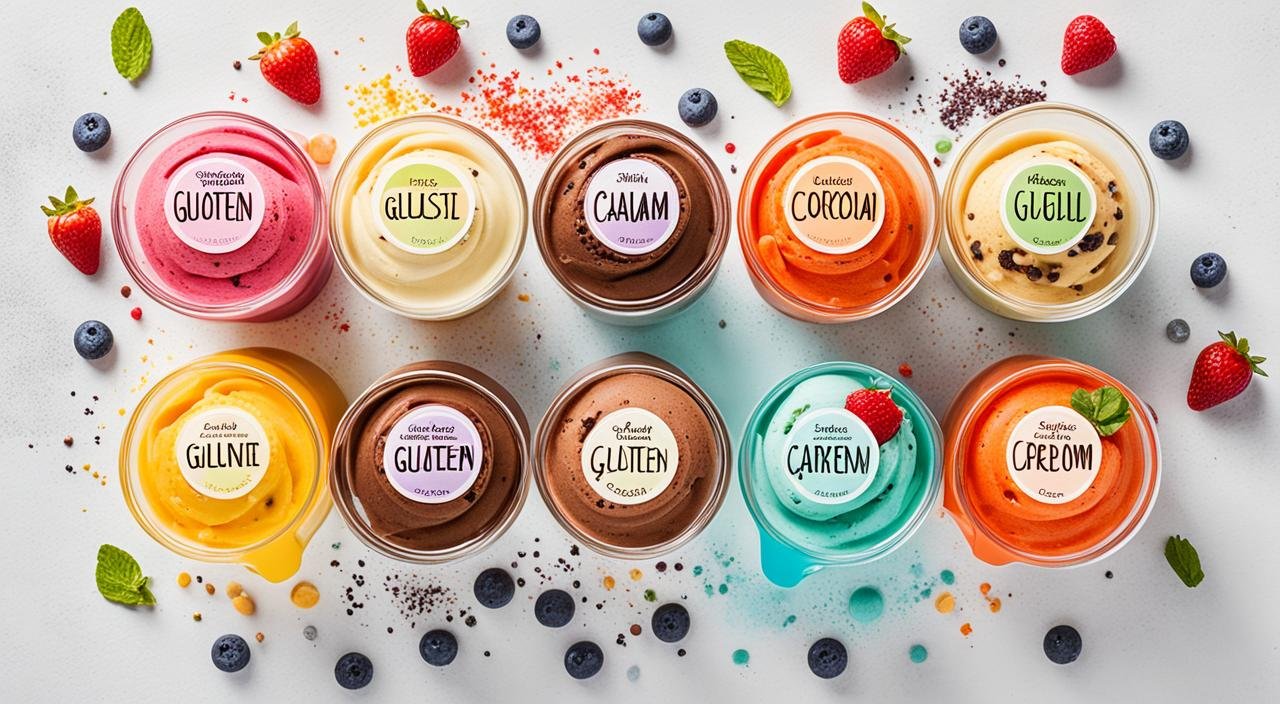Do you love Lifesavers candy but worry about gluten in your diet? Wondering, “Are Lifesavers gluten-free?” You’re in the right spot. We’ll look into Lifesavers’ ingredients and see if they’re gluten-free. We’ll also give you tips to pick the right Lifesavers for your diet.
Key Takeaways
- Lifesavers are a popular ring-shaped hard candy known for their delicious fruit flavors.
- The classic Lifesavers candies are generally considered gluten-free, but the gummies and mints may not be.
- It’s important to check labels and ingredient lists to ensure Lifesavers products are suitable for a gluten-free diet.
- Potential cross-contamination is a concern, so individuals with celiac disease or severe gluten sensitivity should exercise caution.
- Lifesavers offer a variety of flavors and options, making it easier to find gluten-free candy choices.
What Are Lifesavers?
Lifesavers are ring-shaped hard candies that have been loved for over a century. They were first made in 1912 and have since become a favorite. The Mars Wrigley company makes them, offering many tasty flavors and forms like hard candies, gummies, and mints.
History and Popularity of Lifesavers Candy
Lifesavers have been a hit since they came out. They are a common find in candy aisles and on shelves in the U.S. Being part of Mars Wrigley’s big brand family, they are well-known and loved.
Flavors and Varieties of Lifesavers
- Lifesavers come in many classic and new flavors for different tastes.
- They also offer gummies and mints, giving more options to consumers.
- Seasonal flavors like candy canes come out now and then, making them even more popular.
If you want a refreshing mint, a fruity taste, or a classic candy, Lifesavers have it. This iconic brand has been making people happy for years, across all ages.
Ingredients in Lifesavers
Lifesavers, the classic hard candy, has a simple list of ingredients. The main parts are corn syrup, water, modified corn starch, and gelatin. They also have less than 2% of citric acid, natural and artificial flavors, mineral oil, food coloring, and carnauba wax.
Lifesavers don’t have wheat, but they do have corn syrup and modified corn starch. This means they might not be good for people with celiac disease or a severe gluten intolerance. Always check the label before eating any candy or food product.
| Ingredient | Purpose |
|---|---|
| Corn Syrup | Sweetener and texture |
| Water | Solvent and softener |
| Modified Corn Starch | Thickener and binder |
| Gelatin | Texture and chewiness |
| Citric Acid | Flavor enhancer and preservative |
| Flavors (Natural and Artificial) | Taste and aroma |
| Mineral Oil | Glossy appearance |
| Food Coloring | Visual appeal |
| Carnauba Wax | Shine and texture |
Knowing what’s in Lifesavers helps people with dietary needs or allergies make better choices. Always read labels well. If you’re unsure, contact the maker for more info.
Are Lifesavers Gluten-Free?
Lifesavers are a classic and tasty candy loved by many. People with gluten sensitivities or celiac disease often wonder: Are Lifesavers gluten-free?
Gluten-Free Status of Classic Lifesavers Candies
Lifesavers candies are usually gluten-free. They don’t have any gluten in their ingredients. The list includes corn syrup, water, modified corn starch, gelatin, and a bit of citric acid, natural and artificial flavors, mineral oil, and colors.
Gluten-Free Status of Lifesavers Gummies and Mints
Lifesavers gummies and mints are also gluten-free. Their ingredients don’t have gluten. This means more gluten-free choices in the Lifesavers line.
But, it’s key to remember that Lifesavers might not be officially gluten-free. The maker, Mars Wrigley, doesn’t claim they are gluten-free or test for it. This means there could be gluten in them by mistake.
So, people with gluten issues should be careful. Always check the labels or ask the company about Lifesavers candies, gummies, and mints before eating them.

Are Lifesavers Gluten-Free
The National Foundation for Celiac Awareness (NFCA) and the Sure Foods Living website have lots of info on gluten-free candies, like Lifesavers. By knowing what’s in the candy and being aware of possible contamination, people with gluten issues can still enjoy Lifesavers safely.
As you are worried about Lifesavers, then you must willing to know the similar products like Skittles and Starburst also. Read these article to know how are these gluten-free.
Considerations for Gluten Sensitivity
If you have gluten sensitivities or celiac disease, always check the product label for the latest info on Lifesavers and other candies. Even though many candies are gluten-free, they might still have gluten from cross-contamination during making.
Gluten is in grains like rye, durum, and barley. It’s used in many foods for its structure and taste. For people with celiac disease or non-celiac gluten sensitivity, eating gluten can cause health problems.
When looking at Lifesavers and other candies, read the ingredients closely. Some kinds might have wheat products, which is bad for those with gluten issues. If you’re not sure about a Lifesavers product, ask the maker or pick gluten-free candies from reliable brands.
It’s also key to think about cross-contamination. Candy makers might use the same equipment or places, which can add gluten. If you’re unsure, pick candies that are clearly gluten-free.
By being careful and informed about Lifesavers and candy ingredients, people with gluten sensitivities can enjoy their favorite sweets safely. This way, they can look after their health and happiness.
Conclusion
Many Lifesavers products, like hard candies, gummies, and mints, seem gluten-free. But, people with gluten sensitivities or allergies should be careful. Always check the product label and watch out for cross-contamination.
If you’re unsure, ask the manufacturer about the gluten-free status of Lifesavers items. Being careful and informed lets you enjoy this classic candy safely. It’s key to check the ingredients and how they make the candy if you have celiac disease or prefer gluten-free foods.
By making smart choices, we can all enjoy Lifesavers without worrying about our health. Remember, always check the labels and allergen info for a safe treat. This way, you can indulge without any worries.







